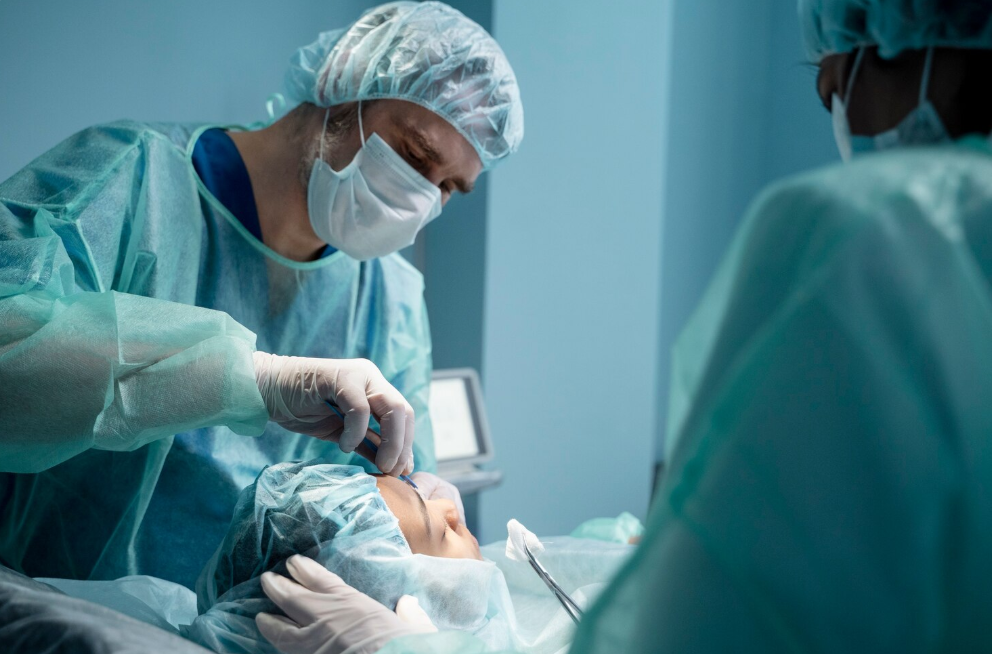Treatment Overview
Closed Cartilage Graft Rhinoplasty in Korea is a specialized scarless rhinoplasty technique where cartilage grafting is performed through incisions made entirely inside the nostrils. This method avoids external scars while allowing surgeons to use cartilage (from the septum, ear, or rib) to refine nasal shape, strengthen tip support, improve breathing, and create a natural-looking profile. Korean surgeons are leaders in closed rhinoplasty, combining aesthetic precision with functional improvement for both domestic and international patients.
Purpose & Benefits
- Enhances nasal tip projection, definition, and support.
- Corrects structural issues such as a weak tip or collapsed bridge.
- Provides scarless results with no external incision.
- Uses the patient’s own cartilage for safe, biocompatible correction.
- Improves both cosmetic appearance and nasal breathing.
- Minimizes downtime compared to open rhinoplasty.
Ideal Candidates
- Patients with a weak or under-projected nasal tip.
- Those with collapsed or crooked nasal structures.
- Individuals who want a scarless, natural-looking refinement.
- Patients with functional breathing problems due to structural weakness.
- Both men and women seeking primary or revision rhinoplasty.
Possible Risks & Complications
- Swelling and bruising (temporary).
- Cartilage resorption over time (rare).
- Asymmetry if graft placement shifts.
- Infection or scar tissue formation inside nostrils (uncommon).
- Possible need for revision if healing alters the shape.
Surgical Techniques Used
- Closed Internal Incision: Access inside nostrils with no external scars.
- Cartilage Harvesting: Septal, ear, or rib cartilage used for grafting.
- Tip Grafts (Columellar Strut, Shield, or Extension Grafts): To support and refine tip projection.
- Bridge Augmentation: Cartilage used to elevate and smooth dorsal line.
- Functional Cartilage Support: Improves breathing by reinforcing nasal valves.
Recovery & Aftercare
- Downtime: 7–10 days for swelling reduction.
- Bruising: Generally less than open rhinoplasty.
- Stitches: Hidden inside nostrils and usually dissolvable.
- Aftercare in Korea includes:
- Swelling-reduction laser or ultrasound therapy
- Post-op cleansing and scar prevention care
- Regular follow-up check-ups with English support teams
Results & Longevity
- Creates a natural, harmonious, and balanced nose shape.
- Cartilage graft ensures durability and stability of results.
- Functional improvement in breathing and airflow.
- Long-lasting outcome as cartilage integrates with existing nasal structures.
- Scarless healing makes it ideal for patients prioritizing aesthetics and function.
Treatment Process in Korea
- Consultation & 3D Analysis: Personalized design for both aesthetics and function.
- Closed Incision Surgery: No external scar, hidden internal approach.
- Cartilage Harvesting & Grafting: Precise placement for tip, bridge, or septal support.
- Refinement & Closure: Achieves natural projection and balance.
- Why Korea is Best: Korean plastic surgeons are highly skilled in scarless techniques and advanced grafting, offering superior outcomes and comprehensive aftercare.
Cost Range
The cost of Closed Cartilage Graft Rhinoplasty in Korea varies by graft type and complexity:
- Basic closed cartilage grafting (tip support): ₩4,000,000 – ₩6,000,000 KRW ($3,000 – $4,500 USD)
- Bridge + tip grafting with septal cartilage: ₩6,500,000 – ₩8,500,000 KRW ($4,900 – $6,400 USD)
- Complex/revision cases with rib cartilage graft: ₩9,000,000 – ₩12,000,000 KRW ($6,800 – $9,100 USD)
Packages typically include:
- Surgeon’s fees & anesthesia
- Operating room & recovery care
- Swelling management therapy
- Translation and patient support services
Popular Clinics in Korea
- ID Hospital (Seoul): Advanced scarless rhinoplasty with cartilage grafting.
- Banobagi Plastic Surgery (Seoul): Specializes in natural tip refinement with grafts.
- JW Plastic Surgery (Seoul): Expert in rib cartilage grafts for closed approaches.
- View Plastic Surgery (Seoul): Strong results in structural correction without scars.
- Cinderella Plastic Surgery (Seoul): Internationally trusted for functional + aesthetic graft rhinoplasty.
✅ Closed Cartilage Graft Rhinoplasty in Korea is an excellent choice for patients who want a scarless, natural-looking transformation with strong cartilage support. With Korea’s advanced grafting techniques and world-class aftercare, this procedure provides both aesthetic refinement and long-term structural stability.




